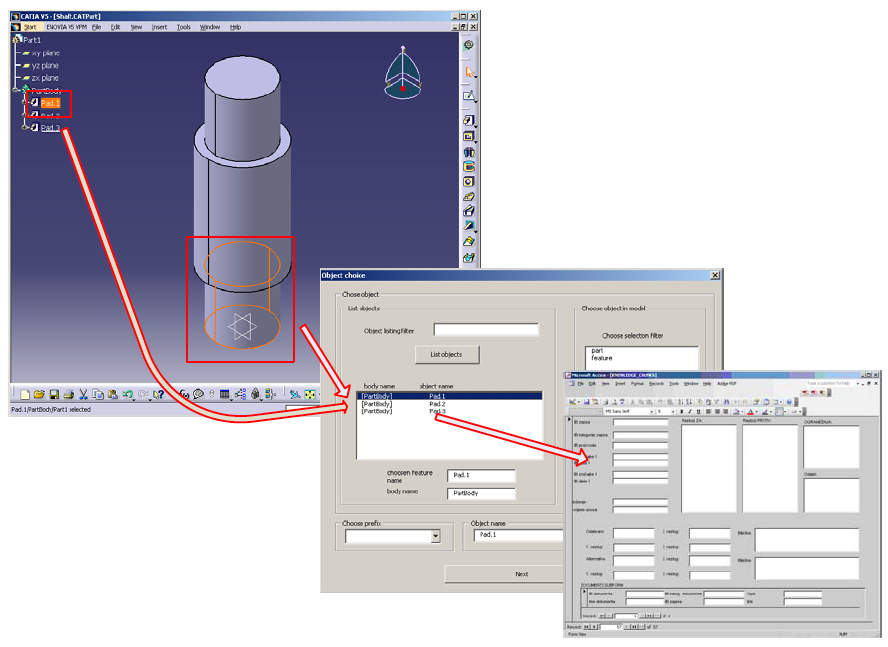Knowledge management systems are being developed with the goal of managing large amounts of knowledge which is being generated during product development. Storing of knowledge is no longer a main issue, due to sufficient amount of storage that computers can provide, but rather its capture. In order to enable searching through stored data, knowledge management systems use some sort of categorization. Due to ambiguity of abstract categories developed through examination of engineering knowledge using top-down approach, a different approach towards taxonomy generation was taken. Suggested approach starts at the lowest level of hierarchy due to elements on that level being more concrete and well defined and, by that, completely understandable to engineers. By defining the lowest level, a foundation was placed for creating hierarchy structure by grouping defined elements into categories and structuring higher levels. Lowest elements are the basics for defining Knowledge chunks which consist of set of knowledge records connected to a CAD model of the product. The process of capturing knowledge chunk is called knowledge capture procedure, whose execution builds up a set of structured records. In relation to non-structured records which have to be categorized afterwards, this way of recording enables high accuracy during search because each part of the record structure is at the same time an index by which knowledge base containing all records can be searched through. This work suggests 15 procedures for engineer knowledge capturing in the form of predefined possible decision explanation sets and gives a description of realization of application technical realization. This application will enable a high degree of knowledge capturing process automation which will gradually reduce the record generating time. Knowledge base structure is suggested in the form of one central base with common record elements and a certain number of individual smaller bases which are specific for each knowledge chunk. Guidelines of search engine for such knowledge base structure are given. In the end, a general plan of experiment for confirming the applicability of the described suggested system, which is to be performed in two phases, is set out.

Matija Hoić
2008
Rector award